Celebrating the opening of the new building, the exhibition introduces a rich variety of artworks, previously passed down by the Imperial Family, in four parts.

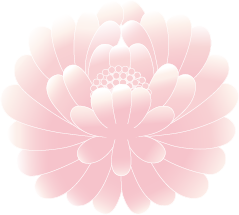
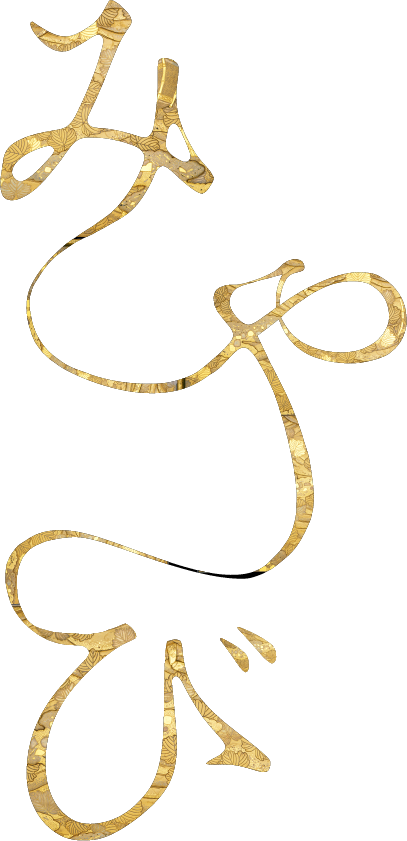


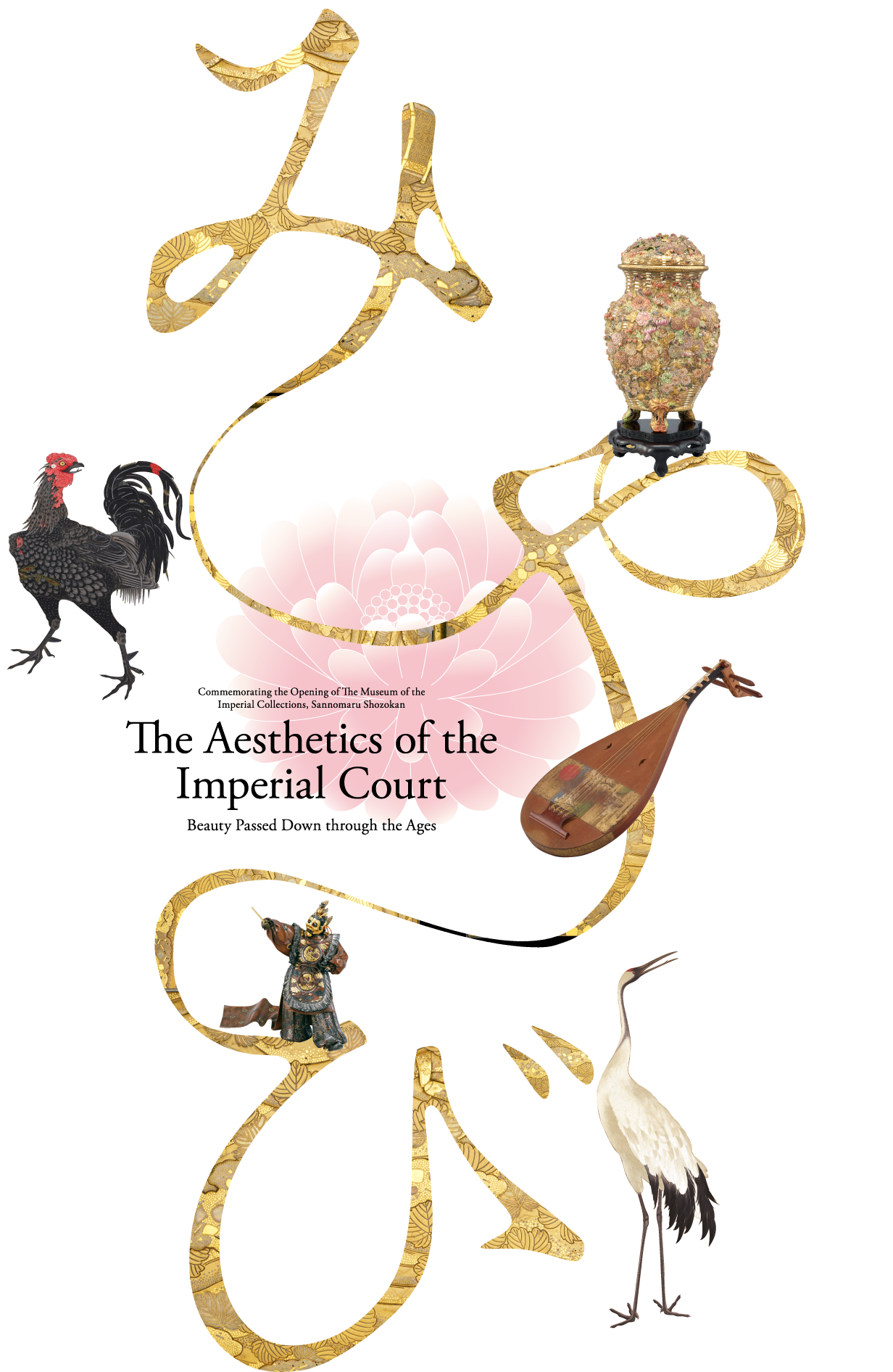




Clockwise from top right: Incense Burner with Chrysanthemums. Chin Jukan XII. Meiji era, 1893 [on view from January 4 to March 3] / Biwa (Lute) named “Asahi”. Tokugawa Nariaki. Edo period, 1854 [on view from April 9 to May 12] / Cranes in a Quiet Garden (detail of the screen). Takashimaya Co., Ltd. Showa era, 1928 [on view from May 21 to June 23] / Bugaku Dancer, Ranryo-o. Unno Shomin. Meiji era, 1890. Important Cultural Property [on view from January 4 to March 3] / “Black Rooster and Nandina” (detail) from Colorful Realm of Living Beings. Ito Jakuchu. Edo period, 18th century. National Treasure [on view from November 3 to 26]
We are pleased to present the exhibition, The Aesthetics of the Imperial Court: Beauty Passed Down through the Ages, in commemoration of the opening of The Museum of the Imperial Collections, Sannomaru Shozokan.
This exhibition, held to celebrate the partial opening of the new building, introduces highlights from the museum's collection in four parts: 1. National Treasures of Sannomaru Shozokan (November 3–December 24, 2023); 2. The Beauty and Techniques of Artworks of the Imperial Court in the Modern Era (January 4–March 3, 2024); 3. Artworks that Adorned the Early Modern Imperial Palaces (March 12–May 12, 2024); 4. Selected Masterworks of Sannomaru Shozokan (May 21–June 23, 2024). All of these works have been preserved and passed down as part of the Imperial Family’s long history and traditions, and we hope that the exhibition will provide visitors with a glimpse into its rich past.
All works housed in the Museum of the Imperial Collections, Sannomaru Shozokan, belong to the nation of Japan.
Celebrating the opening of the new building, the exhibition introduces a rich variety of artworks, previously passed down by the Imperial Family, in four parts.
Discover many of the Museum’s highlights, including the Illustrated Account of the Mongol Invasions from the 13th century, the folding screen Chinese Lions by Kano Eitoku (1543–90), and the paintings from Colorful Realm of Living Beings by Ito Jakuchu (1716–1800), all designated National Treasures!
Besides the classical masterpieces, the exhibition also features various objects used in the daily lives of the Emperors and Empresses of modern times—some are on view for the first time!

Part 1.National Treasures of Sannomaru Shozokan
November 3–December 24, 2023

Part 2.The Beauty and Techniques of Artworks of the Imperial Court in the Modern Era
January 4–March 3, 2024

Part 3.Artworks that Adorned the Early Modern Imperial Palaces
March 12–May 12, 2024

Part 4.Selected Masterworks of Sannomaru Shozokan
May 21–June 23, 2024

Part 1.
November 3–December 24, 2023The rotation schedule is as follows.
Term I: November 3–26
Term II: November 28–December 24
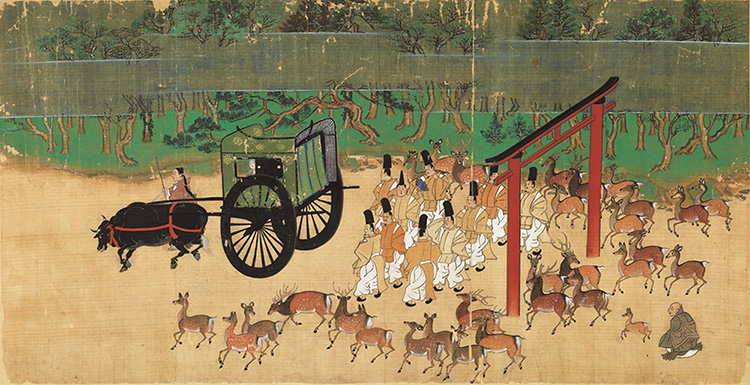
Volume 12 of Illustrated Miracles of the Kasuga Deity (detail)Takashina Takakane. Kamakura period, c. 1309.
National Treasure [on view from November 3 to November 26]
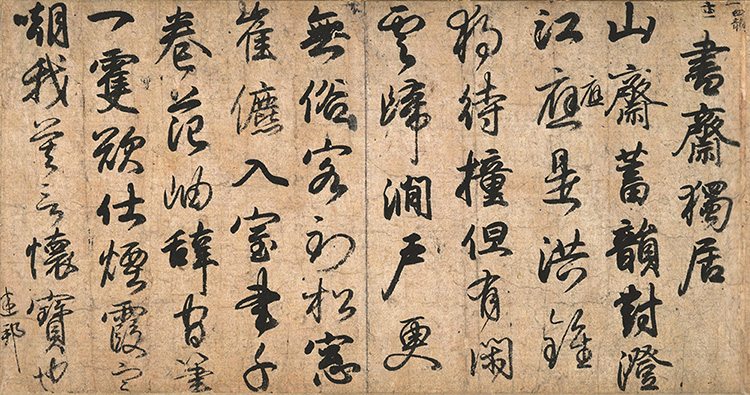
Draft for Screen Poems (detail)Ono no Michikaze. Heian period, 928.
National Treasure [on view from November 3 to December 24. (Different parts of the scroll to be displayed over two rotations.)]
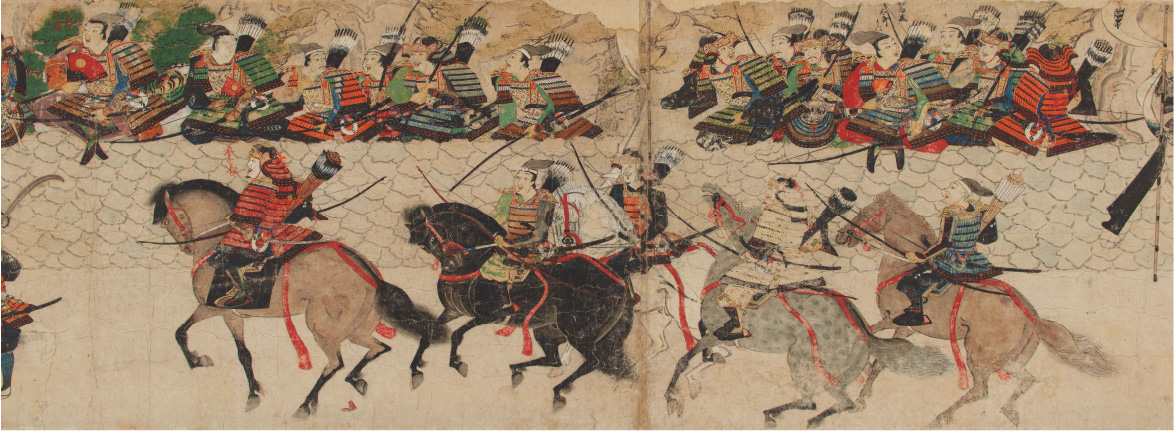
Volume 2 of Illustrated Account of the Mongol Invasions (detail)Kamakura period, 13th century.
National Treasure [on view from November 3 to December 24. (Different parts of the scroll to be displayed over two rotations.)]
12 from a set of 30 hanging scrolls will be on view during the exhibition periods Parts 1 & 4 (on rotation).
Term I: November 3–26
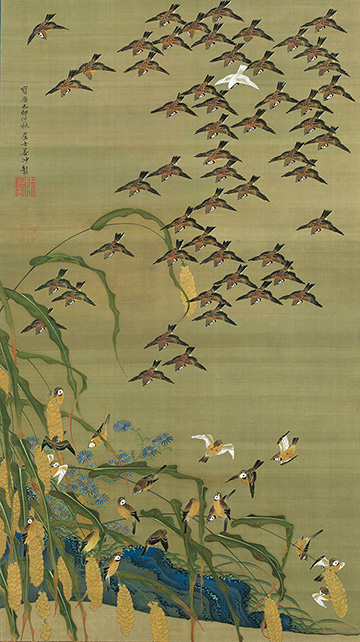
"Sparrows and Millet"
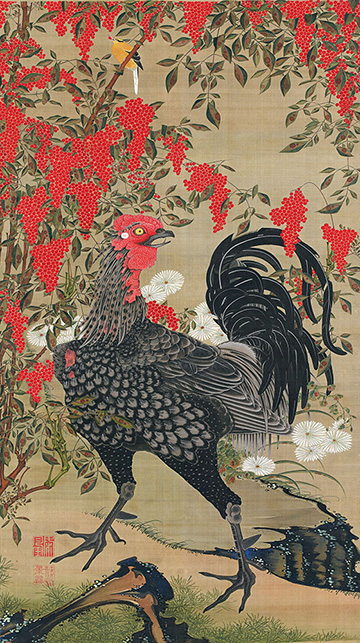
"Black Rooster and Nandina"
Term II: November 28–December 24
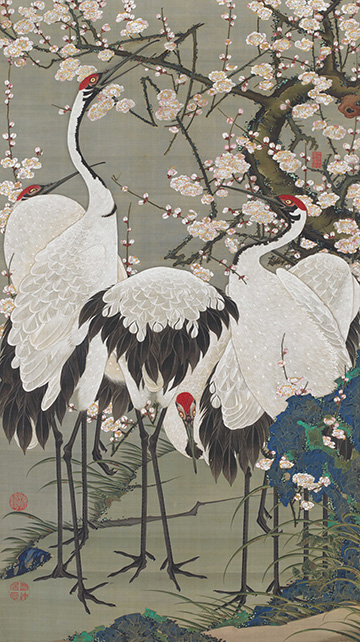
"Cranes and Plum Blossoms"
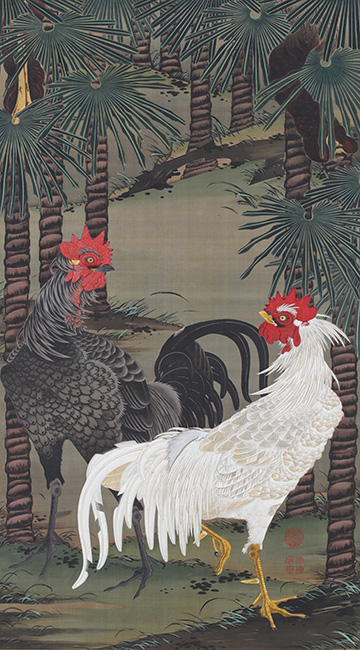
"Roosters and Hemp Palms"
Exhibition running concurrently
Special ExhibitionCelebrating the 5th Year of His Majesty’s Reign and the 30th Wedding Anniversary of Their Majesties
November 3–December 24, 2023
*Some artworks are rotated during the exhibition period. The rotation schedule is as follows.
Term I: November 3–26
Term II: November 28–December 24
Venue: Gallery 1

Formal Court Costume, worn by HM the Emperor at His wedding ceremony [on view through November 26]
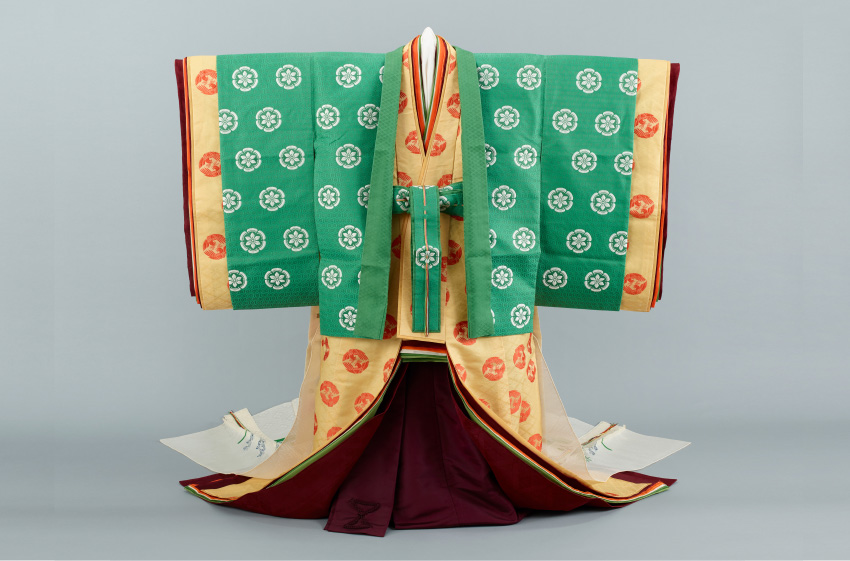
Formal Court Costume, worn by HM the Empress at Her wedding ceremony [on view through November 26]
(Both are housed in the Imperial Household Agency.)

Part 2.
January 4–March 3, 2024The rotation schedule is as follows.
Term I: January 4–February 4
Term II: February 6–March 3
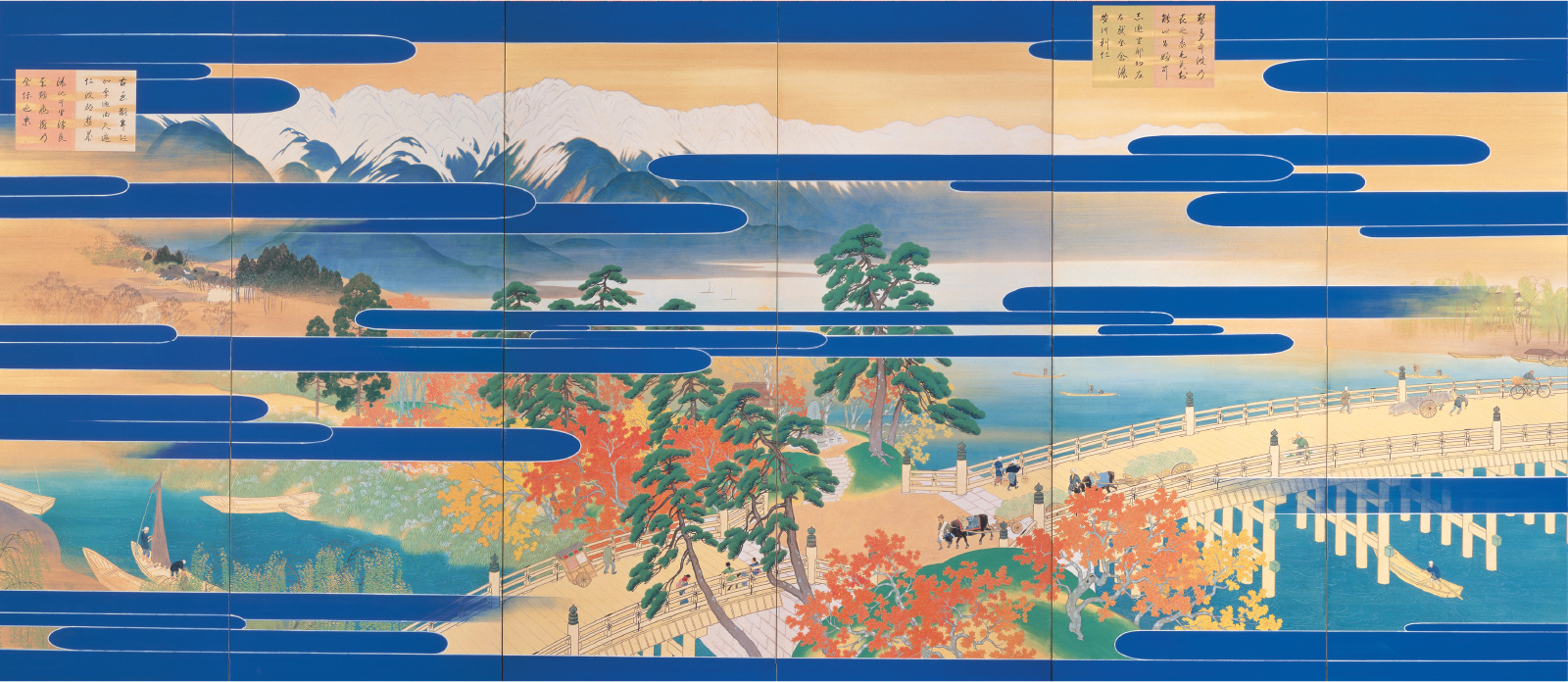
Poetry and Genre Scenes from Yuki province for Daijosai (Grand Thanksgiving Festival after the Enthronement) of Emperor Showa (left screen) Kawai Gyokudo. Showa era, 1928.
[on view from February 6 to March 3]
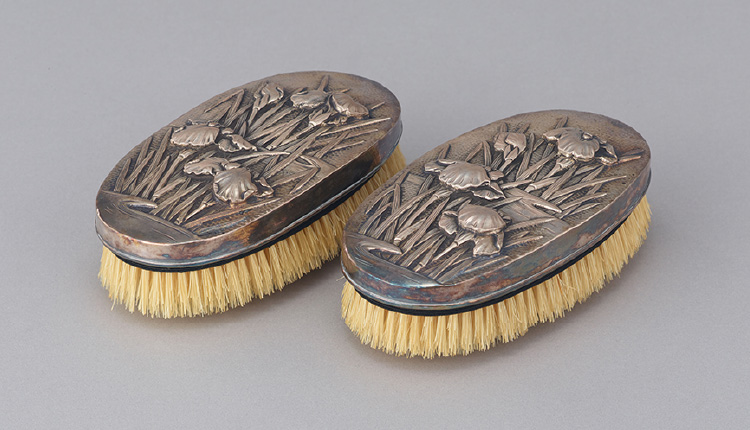
HairbrushesKonoike Art Shop. Meiji–Taisho era, 20th century
[on view from January 4 to March 3]
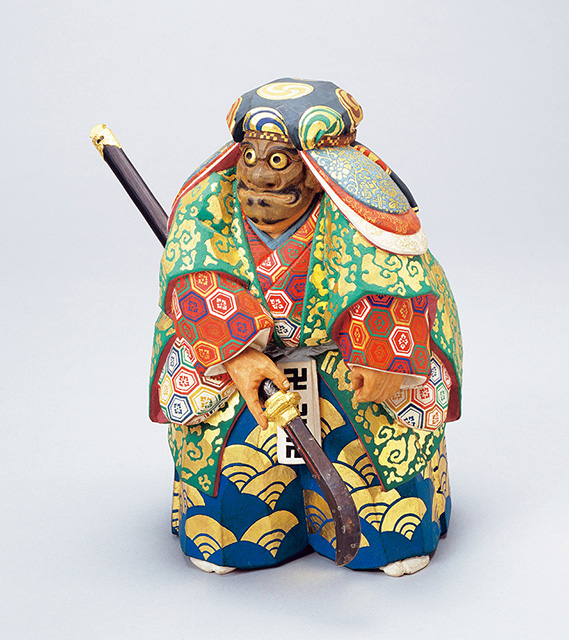
Kumasaka Chohan Morikawa Toen. Meiji era, 1893
[on view from January 4 to February 4]

Part 3.
March 12–May 12, 2024The rotation schedule is as follows
Term I: March 12–April 7
Term II: April 9–May 12
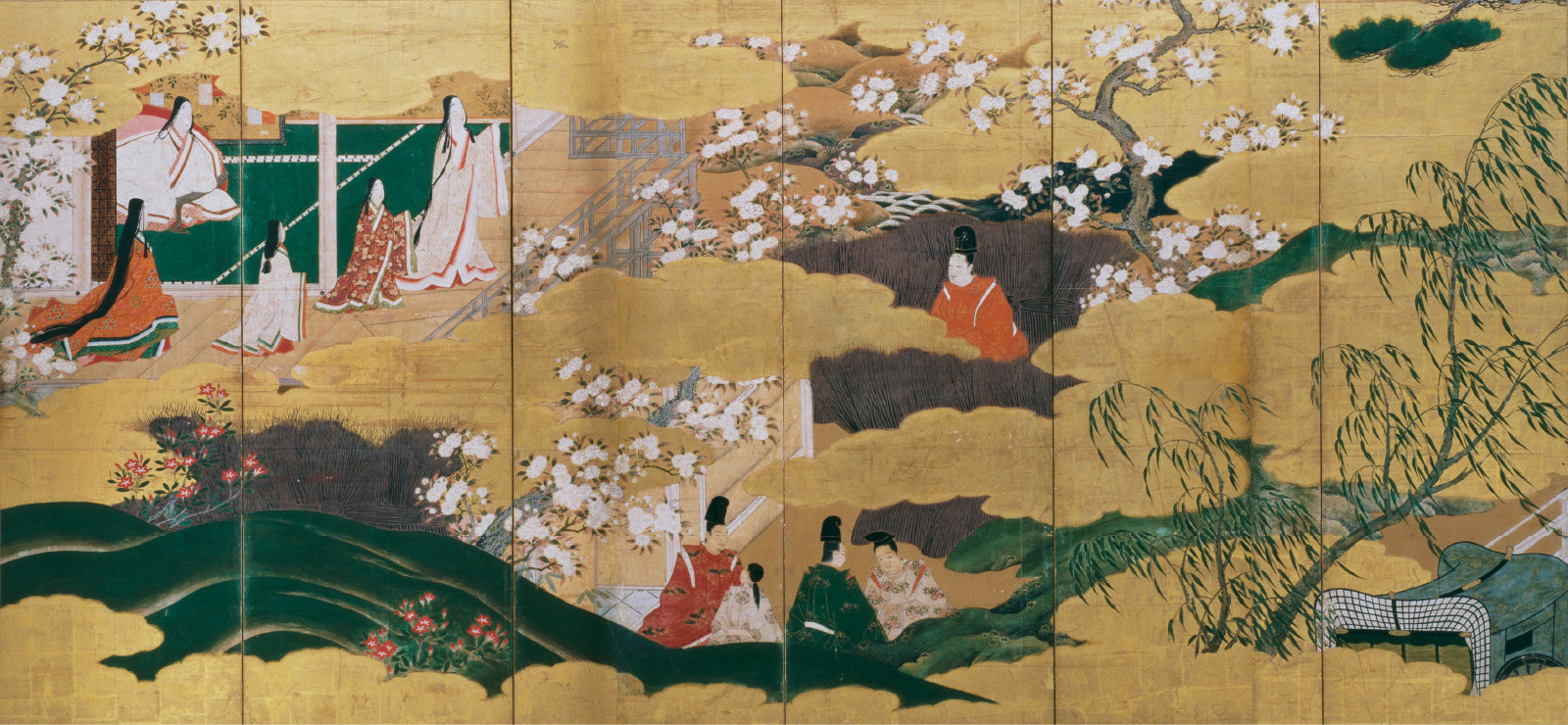
Scenes from The Tale of Genji (right screen)Attributed to Kano Eitoku. Momoyama period, 16th–17th century.
[on view from March 12 to April 7]

Writing Box and Desk with Narrow Ivy Road DesignMomoyama period, 16th century.
[on view from March 12 to April 7]
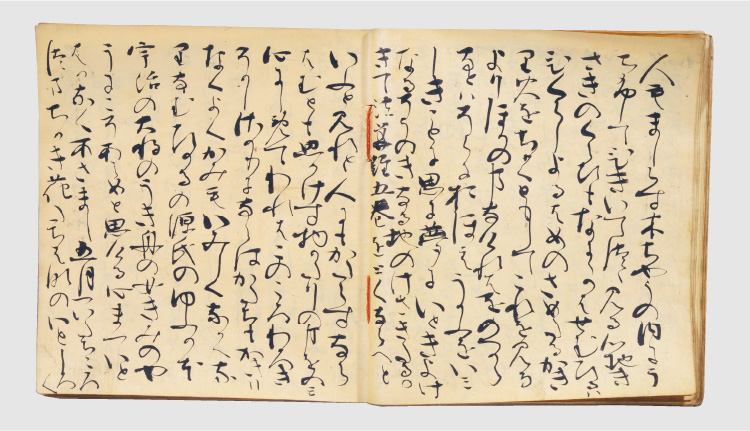
Sarashina Diary
Fujiwara no Sadaie. Kamakura period, 13th century.
National Treasure [on view from March 12 to May 12. (Different pages to be displayed over two rotations.)]

Part 4.
May 21–June 23, 2024*Some exhibits will be changed during the exhibition period.
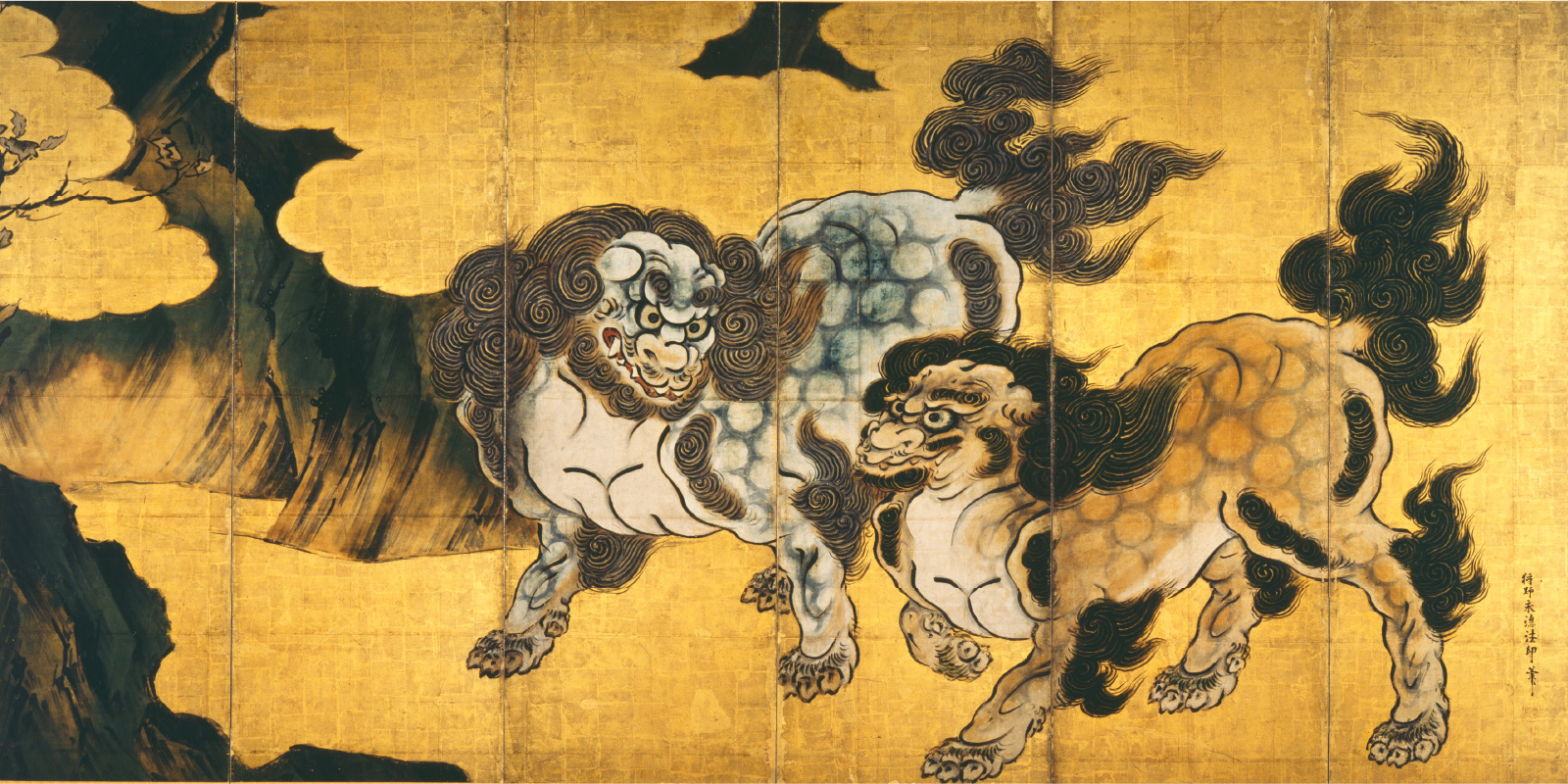
Chinese Lions (right screen)Kano Eitoku. Momoyama period, 16th century.
National Treasure [on view from May 21 to June 23]
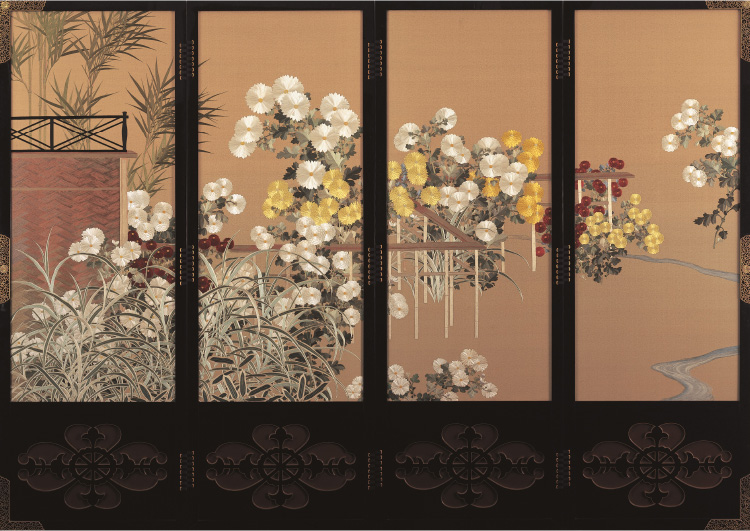
Imperial Garden (left screen) Takashimaya Co., Ltd. Showa era, 1928.
[on view from May 21 to June 23]
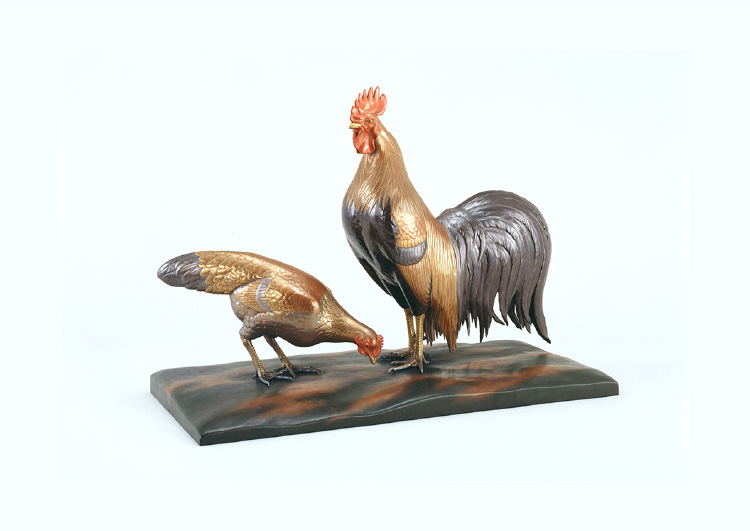
Rooster and HenTojima Kofu and others. Taisho era, 1916.
[on view from May 21 to June 23]
12 from a set of 30 hanging scrolls will be on view during the exhibition periods Parts 1 & 4 (on rotation).
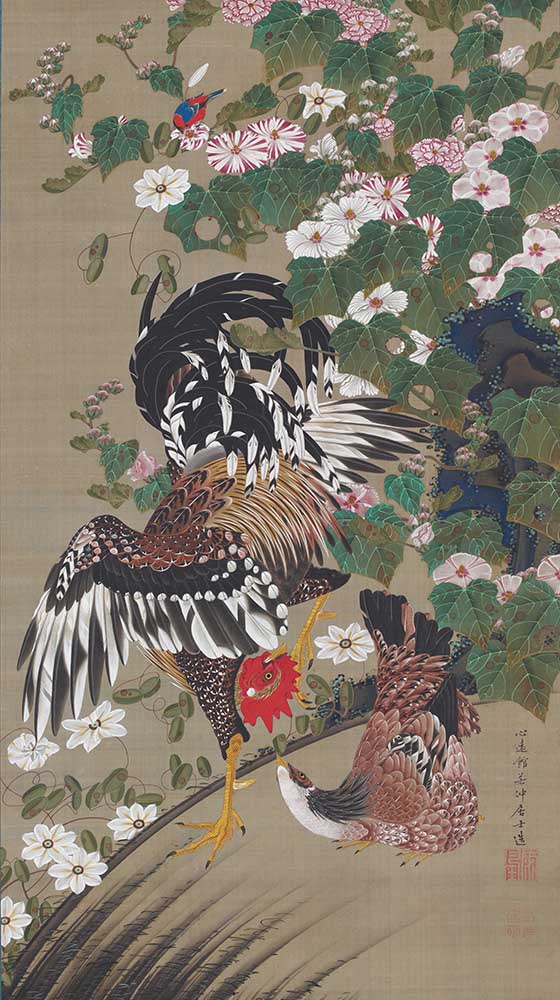
"Rose Mallows and Fowl"

"Fish"
Exhibition
Commemorating the Opening of The Museum of the Imperial Collections, Sannomaru Shozokan—The Aesthetics of the Imperial Court: Beauty Passed Down through the Ages
November 3, 2023– June 23, 2024
●Part 1. National Treasures of Sannomaru Shozokan
November 3–December 24, 2023
●Part 2. The Beauty and Techniques of Artworks of the Imperial Court in the Modern Era
January 4–March 3, 2024
●Part 3. Artworks that Adorned the Early Modern Imperial Palaces
March 12–May 12, 2024
●Part 4. Selected Masterworks of Sannomaru Shozokan
May 21–June 23, 2024
*Some exhibits will be changed during the exhibition period.
Closed
Mondays
(If Monday is a holiday, the Museum will be open on that Monday and closed on the following weekday.)
December 25, 2023–January 3, 2024, and between exhibitions. Subject to change.
Hours
9:30 a.m.–5:00 p.m.
(Last admission 4:30 p.m.)
General
Admission
Adults: \ 1,000
University students: \ 500
*Free admission for high school students, visitors under 18 and over 70. Please present a valid ID.
*All tickets must be reserved in advance online (Timed-Entry System).
*Visitors eligible for free admission or other discounts must also make a reservation for security reasons.
*Visitors with disabilities (along with the one assistant) will be admitted for free without reservation.
Organizer
The Museum of the Imperial Collections, Sannomaru Shozokan
Venue
The Museum of the Imperial Collections, Sannomaru Shozokan
Exhibition Part 1: Gallery 2; Parts 2–4: Galleries 1 and 2
1-8 Chiyoda, Chiyoda-ku, Tokyo, 100-0001 (East Gardens of the Imperial Palace)
[Museum website] https://shozokan.nich.go.jp/en/
Tel.
+81 (0)50-5541-8600 (NTT Hello Dial Service)
Press
Inquiries
Public Relations Office of The Museum of the Imperial Collections, Sannomaru Shozokan (within Kyodo PR)
Contact: Ms. Mitsui
10th Floor, Ginza Shochiku Square, 1-13-1 Tsukiji, Chuo-ku, Tokyo, 104-0045
TEL:+81 (0)3-6264-2382
E-mail:shozokan-pr@kyodo-pr.co.jp
The Museum of the Imperial Collections, Sannomaru Shozokan
1-8 Chiyoda, Chiyoda-ku, Tokyo, 100-0001 (East Gardens of the Imperial Palace)
Subway Lines: 5-minute walk from Otemachi Station (Exit c13a)
JR Lines: 15-minute walk from Tokyo Station (Marunouchi North Exit)
◎ Hirakawa-mon Gate >>>
Subway Tozai Line: 10-minute walk from Takebashi Station (Exit 1a)
◎ Kitahanebashi-mon Gate >>>
Subway Tozai Line: 15-minute walk from Takebashi Station (Exit 1a)
*Hirakawa-mon Gate and Kitahanebashi-mon Gate are closed on Fridays and when the East Gardens of the Imperial Palace are closed.
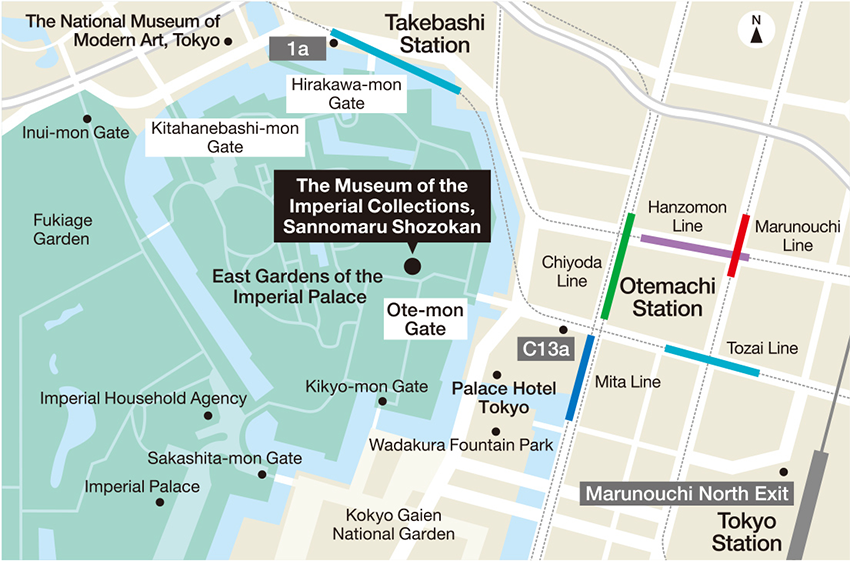
In 1989, His Majesty the Emperor Emeritus and his mother, Empress Kojun donated a collection of works to the nation of Japan that had been passed down in the Imperial Family for generations up to Emperor Showa. The Former Museum of the Imperial Collections, Sannomaru Shozokan, opened in November 1993 on the site of the third keep (Sannomaru) of the former Edo Castle in the East Gardens of the Imperial Palace, as a facility for the storage, preservation, exhibiting, and study of these works. Since then, the Museum’s collection has grown through works donated by Empress Kojun and other members of the Imperial Family, and the collection now consists of around 20,000 works. The collection is composed mostly of Asian arts and crafts with a focus on Japan, but also includes works from a wide range of periods, regions, and genres from other countries around the world.
The Museum celebrates its 30th anniversary in 2023. As the number of works in the collection has increased, the scope of the museum’s activities have expanded, and the number of visitors has gone up, the Museum has begun expanding its facilities with the construction of a new building in 2019, which has now been partially completed. The organization of the Museum was also transferred from the Imperial Household Agency to the National Institutes for Cultural Heritage. The expansion of the Museum will continue during the next few years and the complete Museum is scheduled to open in 2026.
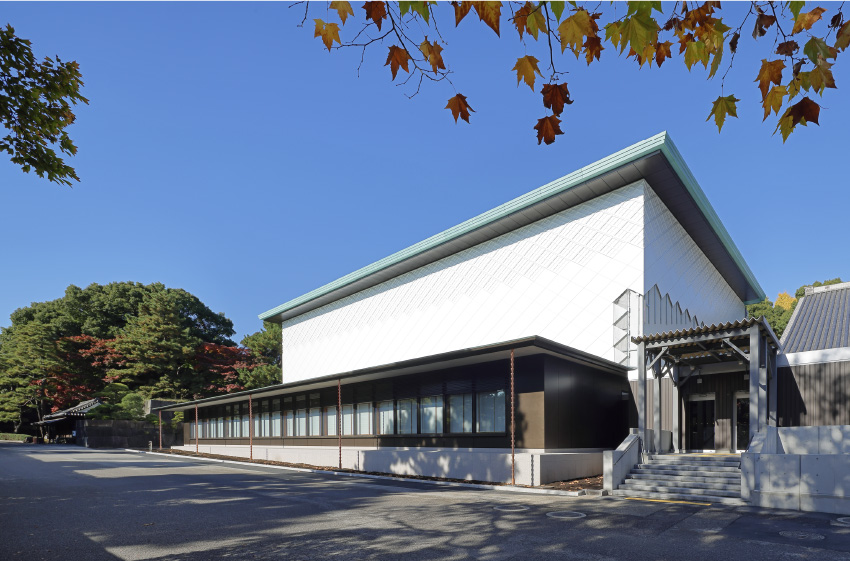
Exterior view
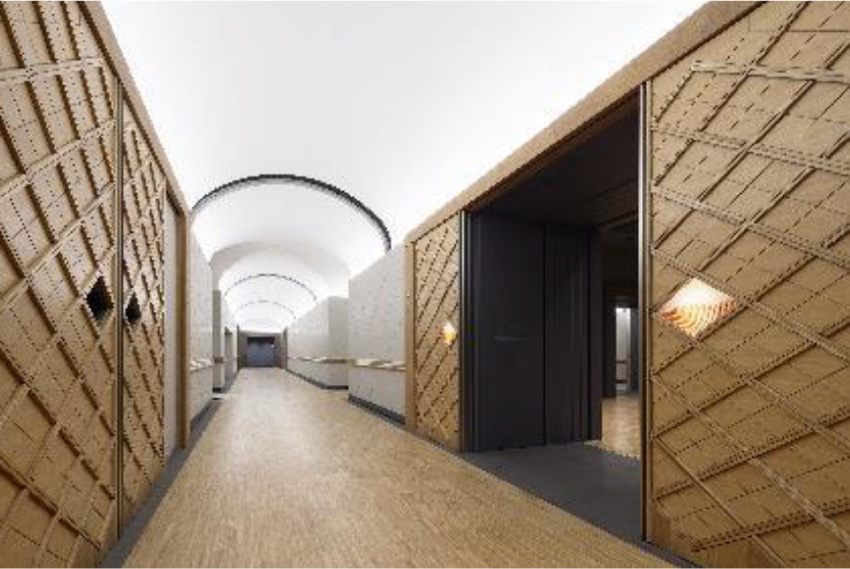
Interior view
9:30 a.m.–5:00 p.m. (Last admission 4:30 p.m.)
Mondays (If Monday is a holiday, the Museum will be open on that Monday and closed on the following weekday.)
December 25, 2023–January 3, 2024, and between exhibitions. Subject to change.